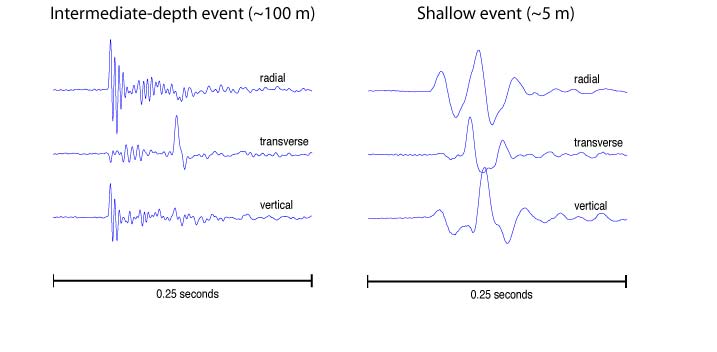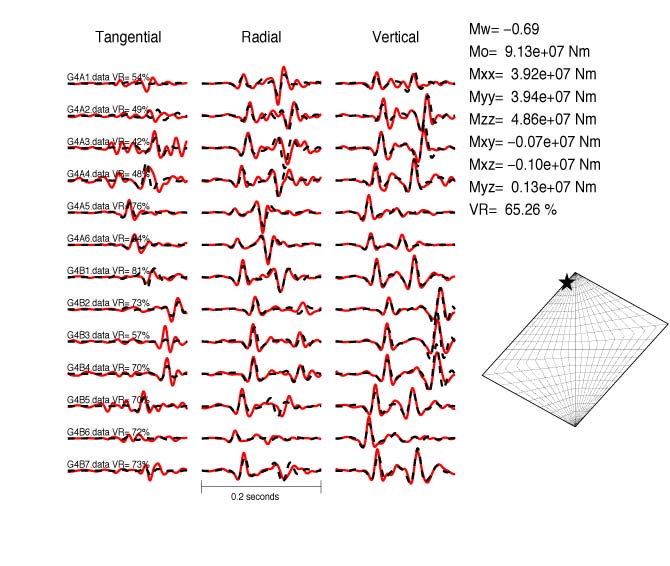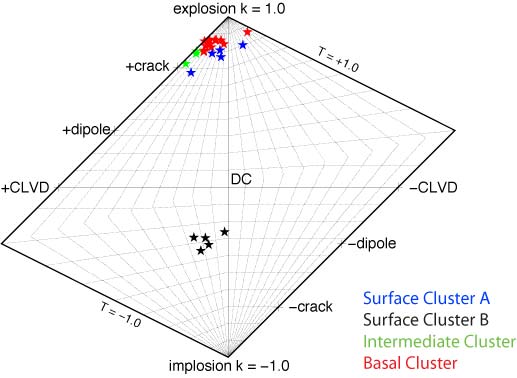

Figure 1: Tongue of Gornergletscher, Switzlerland's 2nd largest glacier
located in Canton Valais.
My research is mainly concerned with seismic studies of glaciological processes. Seismic sources which are in some way related to glacial bodies are often referred to as 'icequakes'. This is a rather loose definition, as it embraces a large spectrum of seismicity, ranging from weak seismic signals which can only be detected by seismometers placed in direct contact with the glacier, to magnitude 4 events, detectable on global seismic networks. The weaker glacial seismicity typically accompanies surface crevasse opening or fracture processes that lead to cerac falls. On the other hand, the stronger, so-called 'glacial earthquakes' are related to large calving events or basal motion which can transfer enough elastic energy to the earth to allow for detection more than 1000 km away.
I am primarily interested in the weaker type of seismicity. Using seismic
arrays on or near a glacier, we can study several englacial or subglacial
phenomena, such as fracturing or water flow and thus learn more about glacial
dynamics and hydrology. So far, I have been involved in two projects, one
concerned with the outburst of an ice-marginal lake in southern Switzerland,
and the other concerned with glacier calving. In the following, I give a short
overview of these investigations.
Gornersee Jökulhlaup Study
Characterization of Icequake Sources

Figure 2: Waveform examples of a deep icequake (100 m depths, glacier bed at
about 150 m) and a shallow icequake.
Typical events have a magnitude
between -2.0 and -1.5.
The investigation of Gornersee outburst floods (also known by the Icelandic term 'jökulhlaup') was conducted by several glaciology groups at the ETH Zurich (project homepage). One of the two main components of the seismic study during Gornersee jökulhlaups was the characterization of typical icequakes on an Alpine glacier. In this context we focused on the following questions: At what depths inside the glacier do icequakes occur? How does the icequake activity fluctuate in dependence of other parameters? What kind of fractures cause icequakes?
On warm summer summer days, more than 4,000 icequakes per day can be detected. The large majority (an estimated 99 % or more) is due to crevasse opening near the glacier surface. On the other hand, there are also some events which occur near the glacier bed or at intermediate depths. Figure 2 shows typical examples of a near-surface and an intermediate-depth icequake. Both seismograms were recorded at the surface at roughly 100 m epicentral distance. The intermediate-depth event, similar to basal events, shows higher frequencies and is dominated by impulsive P and S arrivals. The shallow event, on the other hand, lacks high frequencies and is dominated by a Rayleigh wave, which is strongest on the vertical component. These characteristics were used to design an automatic waveform discriminator to identify deep icequakes, which were of particular importance to the Gorner project for reasons described below.

Figure 3: Waveform fit of a basal icequake. The data (solid red line) and
synthetics (dashed black line)
were filtered between 20 and 80 Hz.
In order to investigate the mechanisms of icequake sources we performed moment tensor inversions. A seismic moment tensor is a 3x3 symmetric tensor that represents a seismic source in terms of force couples. It contains information about the failure mechanism (e. g. shear, tensile or explosion), the source strength and orientations of fault planes, if applicable. The inversion finds the seismic moment tensor whose theoretical seismograms best fit the measured waveforms. The crucial part in a moment tensor inversion is to correctly model the path effects, i. e. the seismic velocity structure of the glacier must be adequately known. For near-surface and intermediate-depth events we found that a homogeneous halfspace was sufficient to achieve good waveform fits. On the other hand, for basal icequakes we had to include the ice-bedrock interface in the seismic velocity model. Figure 3 shows an example of a waveform fit of a basal event. The synthetics reproduce the P and S waves in most instances yielding a variance reduction of 65.3 %. The skewed grid is an example of a source-type plot, which is further explained in the following paragraph. It indicates a highly isotropic source.

Figure 4: Source-type plot for the moment tensors of four icequake clusters.
Source-type plots as shown in Figure 4 are used to visualize the physical mechanims represented by a moment tensor. To this end, the two parameters T and k (both ranging from -1 to +1) are calculated from the eigenvalues of a moment tensor. T indicates how strongly the moment tensor departs from a pure double-couple mechanism ('DC', at the center of the grid), which represents a shear dislocation. The parameter k, on the other hand depends on the isotropic part of the moment tensor or, in other words, on the volumetric change that the source undergoes during rupture. For instance, a shear dislocation (DC mechanism) is not associated with a volumetric change, hence k=0. An explosion is a purely isotropic source, hence its k-value is equal to 1.
Figure 4 shows four types of icequake clusters recorded during the field campaigns on Gornergletscher, with each star representing one event and each color representing a certain icequake cluster. Three clusters have highly isotropic moment tensors indicated by the large k-values. By considering constrained moment tensor inversions and the most plausible mechanisms in Alpine glacier ice we concluded that these events are due to tensile faulting, the '+crack' mechanism. The reason why the stars do not exactly coincide with the +crack location in the source-type plot is that the full moment tensor inversion used to produce Figure 4 is prone to numerical instabilities.
As suggested by their names, we investigated two types of surface
clusters. Surface cluster A has a tensile crack mechanisms as just
discussed. Considering waveform characteristics we note that this is the
typical crevasse-opening event near the surface, which makes up the vast
majority of the data set. However, the source mechanisms of surface cluster B
distinguish themselves from all other events. We again used constrained moment
tensor inversions to show that these events are caused by shear failure near
the surface. Although we have only found about one dozen such events this is
solid evidence for shear rupture within Alpine glacier ice.
Basal Icequake Activity

Figure 5: Basal water pressure (black solid line) and basal icequake occurrences (red squares) on Gornergletscher in 2004 and 2006. |
|
The second main component of the seismic study of the Gornersee
jökulhlaup was to establish a link between the subglacial lake drainage
and the glacier's basal seismicity. Although this type of seismic events makes
up only a very small portion of the tens of thousands of icequakes recorded
each field season, it is of
particular interest, because the lake drainage poses a substantial
perturbation to the subglacial hydrological conditions.
During the melt season, the surface seismicity is usually highest during the warm hours of the days. This can be attributed to the surface melt which accumulates near the glacier bed and thus enhances basal motion leading to larger ice deformation. Contrary to this pattern we found that basal icequakes usually occur during the night or the early morning hours. In Figure 5 we compare the occurrence of basal icequakes with subglacial water pressures measured in boreholes in 2004 and 2006. As typical for the subglacial drainage system of an Alpine glacier during the melt season, there are large diurnal pressure variations of up to 100 m water column or more. This further means that the two boreholes were well conntected to the subglacial drainage system. These large pressure variations occur because the subglacial drainage system efficiently drains during the night, when surface melt ceases. During the lake drainage or overflow periods, however, the diurnal pressure fluctuations are much less pronounced or event absent. This can be attributed to the lake water which enters the subglacial drainage system maintaining high subglacial water pressures even at night. Figure 5 shows that basal icequakes usually occur during low or decreasing water pressures. This can be explained by basal motion as follows: During the day the high subglacial water pressures enhance basal motion. In fact, on some days flotation level is reached, which means that the glacier can completely decouple from its bed. At night, however, as the water pressures fall, the glacier recouples to its bed and the basal ice layers have to undergo drastic deformation leading to rupture and basal icequakes. As an alternative explanation basal water-filled cavities may close quickly enough during decreasing water pressures to cause fractures in ice layers above them. |
Glacier Calving
Work in progress ...